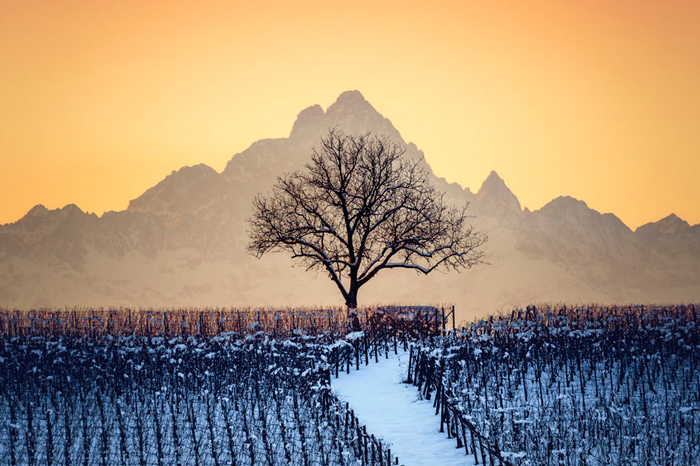Holy grail or propaganda? Terroir is a controversial topic among winelovers. What is terroir? Its definition, origin and history
The wine world has its fair share of jargon. To that extent it’s not different to any other sphere of interest. Words and terms have an accepted meaning among peers that may not be obvious to outsiders.
However, in the wine world there are terms whose exact definition is more elusive and open to interpretation. One of these words is terroir. For this reason I decided to dedicate a mini-series on Wine and Other Stories to answer a simple (but not so simple) question: what is terroir in wine?
I offer my particular view on the topic, aware that many detractors will protest and hold a different opinion to mine on this controversial matter. Nonetheless, I will answer the question what is terroir? in three parts:
- Part 1 (this article): provides a general definition of terroir, along with a brief history of the term and its evolution
- Part 2: focuses on the role of soil, a feature that is often considered paramount in defining terroir
- Part 3: deals with the role of human interaction. Is it part of terroir or something completely unrelated? Spoiler alert: opinions differ greatly on the subject!
An analogy
I will start my discussion on terroir with a comparison with music. The more I know about wine, the more I realise these two universes, music and wine, share uncanny similarities.
In this very moment I’m listening to Beethoven’s Symphony No.9. Needless to say, it’s a masterpiece. Every single note delivered by each musician contributes to the overall perfection. All the instruments seem to act as a whole, delivering something that sounds more divine than human.
As pompous as it might sound, I like to think of great wine in the same way. If wine was a symphony, terroir would be its musical instruments. And the winemaker, its conductor.

Attempting a definition
The term terroir is one of the most elusive, easily misunderstood and mysterious buzzwords of the wine world. When I approached wine tastings for the first time, I heard this world reverentially whispered when people tasted some particular good wines. At that time I (probably like you right now) was left wondering: what then is terroir?
Terroir means the sense of place or “somewhereness” of wine. More specifically it refers to a combination of natural (and human?) factors that unequivocally identify the essence of a particular wine and makes it stand apart from wines produced elsewhere. The combination of these elements ultimately dictates the unique characteristics and style of a terroir-driven wine, regardless of the particular vintage or other external circumstances.
Different people have different ideas on what elements constitute terroir. For me, terroir includes the following factors:
- Soil: its physical and chemical composition, depth, texture, layering, origin
- Topography: vineyard elevation, aspect, slope
- Climate: both macroclimate (average temperature, amount of rainfall and sunlight) and mesoclimate (distance from rivers, humidity, fog, etc.); if you want an insight on how climate impacts wine please read my article Why does my wine taste like this? Climatic factors
- Local flora and fauna: aromatic compounds of the surrounding ecosystem travel to the grape bloom contributing to the overall wine taste profile. Different strains of yeasts yield specific and distinctive flavours that also influence the aromatic profile
- Grape variety and clone: the choice of grape varieties or clone to grow in a particular mesoclimate or microclimate
- Human factors: traditions, viticulture and winemaking techniques
The last element of my list, human factors, is highly controversial. Some people firmly believe that human intervention is not part of terroir. While others do include the “man” factor in the equation. According to this school of thought, one of the reasons a great Meursault tastes like a Meursault is because the winemaker adopts certain choices that are not employed elsewhere in Burgundy or in the world.
I personally agree with the latter proposition. Human decisions and traditions are part of what we call terroir. My reason is simple. Have you ever seen vines left to themselves producing wine? Neither have I. I will expand this topic on the 3rd part of my series aimed at answering the question what is terroir?
What wines express terroir
The definition of terroir raises many questions. In fact, one could write an entire book on the topic. Two questions might be the following: does the concept of terroir apply to all wines? What’s the relationship between terroir and quality?
These questions are somewhat related. One might think that if a wine doesn’t express terroir, it cannot be a great wine. Although some wine critics might hold this position, I don’t agree.
Historically terroir was linked to long-established Old World wine regions such as Burgundy, Champagne and Bordeaux. As a result, the tie between terroir and tradition is strong. In those cases, vignerons have meticulously monitored the characteristics of vineyard and winemaking procedures to determine the best wine that could be produced in each acre.
The same approach is not always feasible in other wine regions across the world. If you look at emerging wine districts in the New World, the lack of a consolidated winemaking history kills the possibility of defining a terroir. How can we define terroir then? Do the wines from these areas have distinctive features expressing their “sense of place”? Since we don’t have a reference or baseline, talking about terroir in those circumstances make little sense.
Other occasions where terroir seems not to fit are for blended wines. This is especially true when grapes come from geographically distinct and often widely far flung districts. A good example would be South African wines labelled as Western Cape. In wines like that, the differences ascribed to terroir are obliterated in the moment the blend takes place.

Terroir and quality in wine
Lastly, a few words on terroir and wine quality. Are the two related? To some extent they are, but not as clearly as you might think.
Some quality wines magnificently express all the different nuances of their terroir. When that happens, they are said to express typicity – one of the quality factors I highlighted in my article The six attributes of quality in wine.
On the other hand, a wine doesn’t have to exude its terroir (and therefore express typicity) to be great. Some wines – such as certain natural wines – are purposely made to be atypical, going against conventions and the tradition of the place they belong.
Bulk or mass-produced wines don’t normally express terroir. Their aim is to be palatable for a wide audience at a relatively low price. The grapes are grown to maximise yield and minimise cost of production. As a result, mass-produced wines are almost never made from premium grapes or with demanding winemaking techniques. No effort is made to let the terroir emerge in the glass, since that is not the intended purpose of those wines.

Origin and evolution
Terroir is a French word (of latin origin) that can literally be translated as “earth”,“soil” or “land”. Curiously enough, the term was originally used with a negative connotation. For 17th and 18th century French oenophiles “gout de terroir” described a faulty wine that had an indesiderable rustic taste of earth due to the inferior land from which the grapes were grown.
The word shifted from fault to virtue in the twentieth century, when some Champagne and Burgundy vignerons (it’s always the French!) claimed the superiority of their soil, and its unique characteristics instilled a magic touch to their wines. There began the terroir saga…
Since then winemaking has changed considerably. The constant improvements and technological advancement of wineries produced a double effect. On one side, they reduced the differences in style and quality that had wrongly been attributed to terroir in the past. On the other, they revealed the genuine differences caused by terroir. As such, we can now distinguish the traits of a wine that depend on terroir from the ones that are caused by bad viticultural and winemaking practices.
Not only has winemaking changed over time, so has people’s attitudes towards terroir. Historically, there was a marked difference between the Old World and the New World approaches:
- Old World winemakers praised and highly respected the notion of terroir; most of them were willing to taste the terroir in their wine, as opposed to only the grape variety or their personal interpretation of the wine
- New World winemakers while recognising the relationship between grape and place, have been dismissing terroir as a mixture of mysticism and propaganda
The aforementioned positions exemplify the two extremes of the debate. Of course, intermediate stances exist.
In recent years, more and more New World winemakers are embracing the concept of terroir (with an increasing number of “single vineyard” or “single terroir” wines produced), and their views are getting closer to the classical Old World approach. Who said that the wine world was boring?

What’s next
As I anticipated at the beginning, if wine was a symphony, terroir would be its musical instruments. In this article I tackled the question: what is terroir in wine? I offered an overview of the concept of terroir, attempted a definition of the term, its relation to quality and culminated with the word’s origin.
Continuing the analogy with music, if you want to meet the soloist of the orchestra (the soil) and its conductor (the winemaker) stay tuned – more will follow in the second and third part of this mini-series dedicated to terroir!


Comments · 12